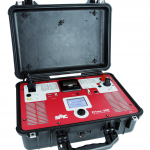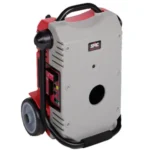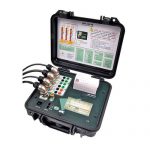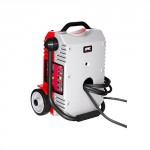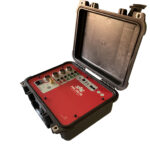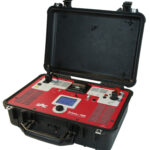Recloser testing
A “recloser” is an automatic, high-voltage electric switch. Like a circuit breaker on household electric lines, it shuts off electric power when trouble occurs, such as a short circuit. In electric power distribution, automatic circuit reclosers (ACRs) are a class of switchgear designed for use on overhead electricity distribution networks to detect and interrupt transient faults. Also known as reclosers or autoreclosers, ACRs are essentially rated circuit breakers with integrated current and voltage sensors and a protection relay, optimized for use as a protection asset.
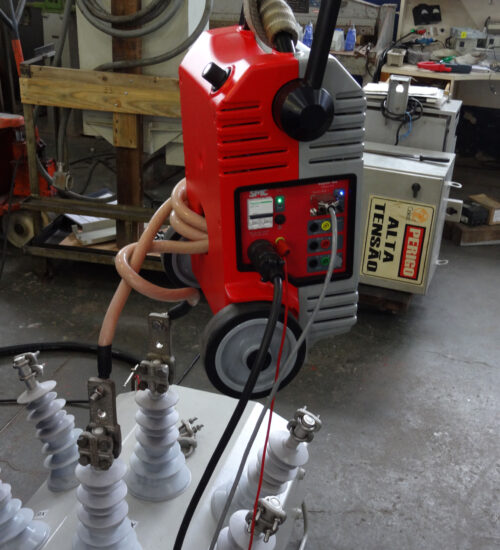
Reclosers are designed to handle a brief open-close duty cycle, where electrical engineers can optionally configure the number and timing of attempted close operations prior to transitioning to a lockout stage. The number of reclose attempts is limited to a maximum of four by recloser Standards. At two multiples of the rated current, the recloser’s rapid trip curve can cause a trip (off circuit) in as little as 1.5 cycles (or 30 milliseconds).
Reclosers are often used as a key component in a smart grid, as they are effectively computer controlled switchgear which can be remotely operated and interrogated using SCADA or other communications. Interrogation and remote operation capabilities allow utilities to aggregate data about their network performance, and develop automation schemes for power restoration.
In conclusion, a recloser is an essential device in an electrical substation that ensures the safety and reliability of the power distribution network.
RELATED PRODUCTS
LOOKING FOR MORE INFORMATION?
Questions? Doubts? No matter what it is, access the EuroSMC Academy technical documentation section and, unlock a world of knowledge!
Advantages of testing your reclosers
A “recloser” is an automatic, high-voltage electric switch. Like a circuit breaker on household electric lines, it shuts off electric power when trouble occurs, such as a short circuit. In electric power distribution, automatic circuit reclosers (ACRs) are a class of switchgear designed for use on overhead electricity distribution networks to detect and interrupt transient faults.
Testing reclosers, particularly in the context of high voltage (HV) and medium voltage (MV) substations, is crucial for several reasons:
- Safety: Reclosers are designed to protect the electrical system and all connected devices from damage caused by overcurrent or short circuit conditions. Regular “recloser testing” ensures that they are functioning correctly and can respond promptly when needed.
- Reliability: “Recloser testing in electrical substations” is essential to ensure the reliability of power distribution. Electrical substations are critical infrastructure for the distribution of electricity. A malfunctioning recloser can lead to power outages, affecting homes, businesses, and public services.
- Maintenance Planning: Testing can reveal potential issues before they become serious problems, allowing for planned maintenance and repairs rather than emergency interventions. This can save time, money, and resources.
- Regulatory Compliance: In many jurisdictions, regular testing of electrical equipment, including reclosers, is required by law or industry regulations. Testing helps to ensure compliance with these requirements.
- Longevity of Equipment: Regular testing can extend the life of reclosers and associated equipment by identifying issues early and allowing for preventative maintenance.
NOT A CUSTOMER YET?
Join thousands of companies around the world using SMC for testing substations and protection relays, with more than 60 representatives and distributors worldwide.

